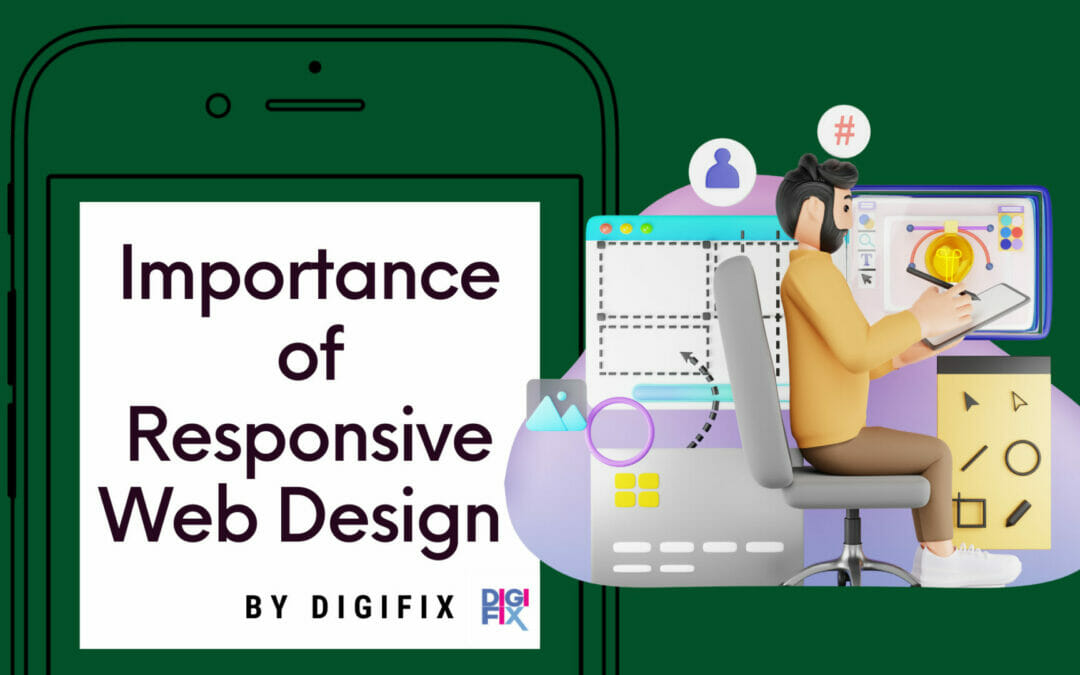In today’s digital age, where the majority of people use smartphones, tablets, laptops, and desktops, creating a seamless user experience across different devices has become critical for website owners and businesses.
Responsive web design has emerged as the solution to this challenge, ensuring that websites adapt and provide optimal viewing experiences on various screen sizes and devices. This article explores the importance of responsive web design in engaging users across devices.
Understanding Responsive Web Design
Responsive web design is an approach that enables websites to adapt and respond to the user’s behavior and environment based on the screen size, platform, and orientation. It utilizes a mix of flexible grids, layouts, images, and CSS media queries to create a user-friendly experience, regardless of the device being used.
By using responsive design, websites can automatically adjust their layout to fit the screen size, ensuring easy navigation and readability.
The Impact of Mobile Usage
According to DataPortal, The extensive majority of internet users (95%) use mobile phones to go online and mobile phones now account for roughly 57% of online time, as well as close to 53% of the world’s web traffic.
With the widespread use of smartphones, mobile browsing has surpassed desktop usage. Users now expect seamless experiences when accessing websites on their mobile devices.
If a website is not mobile-friendly, it can lead to a frustrating and unengaging experience, causing users to leave and search for alternatives. That can result in lost opportunities, reduced conversions, and a negative impact on the website’s ranking in search engine results.
Importance of Responsive Web Design
Responsive web design offers several benefits that contribute to a positive user experience and improved performance across various devices. Here are some key advantages:
1. Adaptability across devices
Responsive design ensures that your website adapts seamlessly to different devices and screen sizes, including desktops, laptops, tablets, and smartphones.
2. Enhanced User Experience
Users can navigate and interact with your website more comfortably, regardless of the device they are using, leading to a better overall user experience.
3. Single Content Source
With responsive design, you maintain a single version of your website’s content, simplifying content management and reducing the chances of inconsistencies across different versions.
4. Improved SEO Performance
Google and other search engines favor mobile-friendly websites. A responsive design contributes to better search engine rankings, increasing your website’s visibility.
5. Cost-Effectiveness
Developing and maintaining a single responsive website is often more cost-effective than creating separate versions for desktop and mobile devices.
6. Faster Loading Times
Responsive websites typically have faster loading times because they don’t require redirects to different URLs based on the device. This can positively impact both user experience and SEO.
7. Easier Analytics Tracking
Analytics become more straightforward with responsive design, as you are dealing with a single set of data. This makes it easier to track user interactions, analyze performance, and make data-driven improvements.
8. Future-Proofing
Responsive design is adaptable to new devices and screen sizes that may emerge in the future. This future-proofing ensures that your website remains relevant and functional as technology evolves.
9. Consistent Branding
A consistent and uniform brand experience is maintained across all devices, reinforcing your brand identity and messaging.
10. Reduced Bounce Rates
Users are less likely to leave a site that is responsive and provides a seamless experience. It can lead to lower bounce rates and increased user engagement.
In summary, responsive web design is essential for meeting the expectations of modern users who access websites on a variety of devices. It not only enhances user experience but also positively influences search engine rankings, reducing development and maintenance costs in the long run.
Implementing Responsive Web Design
Flexible Grids and Layouts
Using a flexible grid system allows elements on the website to resize proportionally, maintaining their relative position and aspect ratio across different devices. Flexible layouts ensure that content flows naturally, providing a comfortable reading experience.
Media Queries
CSS media queries enable the website to detect the screen size and apply specific styles accordingly. Media queries play a crucial role in ensuring that the website’s design adapts appropriately to various devices.
Optimized Images
Large images can slow down the loading speed of a website on mobile devices. Optimizing images for different screen sizes and resolutions is essential for a smooth and quick user experience.
Touch-Friendly Elements
On mobile devices, users interact with websites using touch. Designing elements like buttons and menus with touch in mind improves user interaction and reduces frustration.
Conclusion
In conclusion, responsive web design is an indispensable aspect of modern web development. By adopting this approach, website owners can deliver a seamless and engaging user experience across devices, leading to higher user satisfaction, increased conversions, and better search engine rankings. Embracing responsive design demonstrates a commitment to user-centricity and can give businesses a competitive edge in today’s digital landscape.
Do you want more traffic?
—————
Hi, we are an Australian digital agency doing groundbreaking work to help a business like yours reach its full potential. My only question is will you qualify for our services?
Do you want more traffic?
—————
Hi, we are an Australian digital agency doing groundbreaking work to help a business like yours reach its full potential. My only question is will you qualify for our services?

